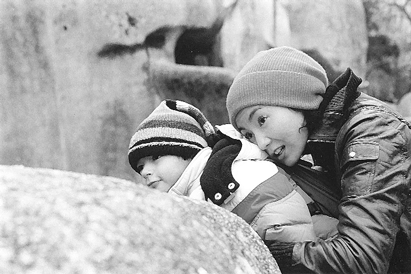Olivier Assayas’ realistic heroine comes “Clean”
In the mid ‘90s, Olivier Assayas seemed to be on the verge of becoming a great director. Like Léos Carax, who started working slightly earlier, he had a particular affinity for youth, especially romanticism and rebellion’s potent interaction. However, his two best films—“Cold Water” and “Irma Vep”—were made on the cusp of middle age. Their very style—full of graceful handheld camera and sharp use of a rock soundtrack—reeked of energy and vitality.
But everyone grows up, and Assayas became less sure of himself when depicting characters over 35. To his credit, he never rested on his laurels, making aging and coping with death the subject of “Late August, Early September,” but until now, he didn’t seem to have a firm grasp on the subject. With “Clean,” he’s finally made a satisfying film about middle-aged people.
Faded rock star Lee Hauser (James Johnston) and his bisexual wife Emily (Maggie Cheung) are on tour in Canada. Lee searches for a record deal, but his glory days are clearly past him. The couple is hobbled by their heroin addiction. In Hamilton, Ontario, they squabble with a hanger-on (Don McKellar). Emily goes to buy heroin and gives some to her husband in a hotel room. She then heads out to take some herself. Falling asleep by a bridge, she returns to discover that Lee has overdosed and died. Caught with drugs in her purse, she’s sentenced to six months in jail.
Lee’s parents Albrecht (Nick Nolte) and Rosemary ( Martha Henry) live in Vancouver, where they take care of their grandson. When Emily gets out of jail, she wants a place back in her son’s life, but she needs to find a job and remain clean in order to get back in her in-laws’ good graces.
Drugs have preserved Emily in a state of perpetual adolescence. When they’re out of the picture, she has a lot of growing up to do. Addiction is a popular theme in recent cinema, especially American indies, but “Clean” does its best to sidestep the clichés around it. Films about junkies usually involve fetishistic depictions of the ritual of shooting up, but “Clean” merely shows Emily’s face and the upper part of her arm, with a rubber tube tied around it. There are no pornographic close-ups of needles entering veins.
The film’s dialogue about drugs centers around one question. Can an addict really change her life? In an early scene, a musician says, “Junkies are forever.” Emily’s life suggests that it’s a false assumption, but it dominates other people’s perceptions of her.
“Clean” is probably Assayas’ most accessible film, although it doesn’t have the brio and forward momentum of “Cold Water” and “Irma Vep.” It’s certainly an improvement over “demonlover,” his confused 2002 cyber-thriller. Although it’s a far more conventional narrative than that film, it’s full of ellipses and omissions. Perhaps influenced by the late Maurice Pialat, Assayas’ script leaps from time to time and place to place––though unlike a Pialat film, “Clean” helpfully offers intertitles to signpost its leaps. Important moments—like Emily’s son learning the news of his father’s death—are left off screen, while Assayas devotes a lot of time to seemingly insignificant events like a game of pool. Unfortunately, not all these digressions work. The cameo appearance by British singer Tricky, playing himself, is perplexing. The dialogue, especially Albrecht’s, tends to overemphasize points implicit in the plot.
Assayas and cinematographer Eric Gautier roamed all over North America and Europe making this film, which is a French/British/Canadian co-production. They make Hamilton, Ontario look both hideous and strangely beautiful—the city seems like a Canadian equivalent of the run-down industrial sections of Cleveland or Detroit. They are particularly sensitive to the particulars of their locations. Assayas has always been one of the most cosmopolitan French directors; as his interviews show, he expresses himself in English far better than most Americans can.
Assayas and Cheung were married for several years after getting together for “Irma Vep,” in which she played herself on a visit to France, although he never directed her during that period. Her performance is restrained and rarely showy; in fact, some of her dialogue in early scenes is barely intelligible, although she doesn’t wallow in junkie abjection. After getting out of jail and awakening from drugs’ numbing influence, Emily’s emotional palette gradually expands, and Cheung does a terrific job of showing a woman awakening to life.
Assayas seems uneasy with conventional narrative, especially one that skirts Lifetime Network uplift, but “demonlover” suggested that he needs its discipline. In any case, the accessibility of “Clean” doesn’t mean that he’s become a discipline of three-act screenwriting guru Syd Field. It ends on an upbeat note, while implying that Emily still has an enormous way to go before reaching real maturity. The kind of rock scenester represented by Emily is often mocked, but Cheung’s performance turns her into a three-dimensional person rather than a diva or groupie. Perhaps she and Assayas would both benefit from working together more often.
gaycitynews.com


































